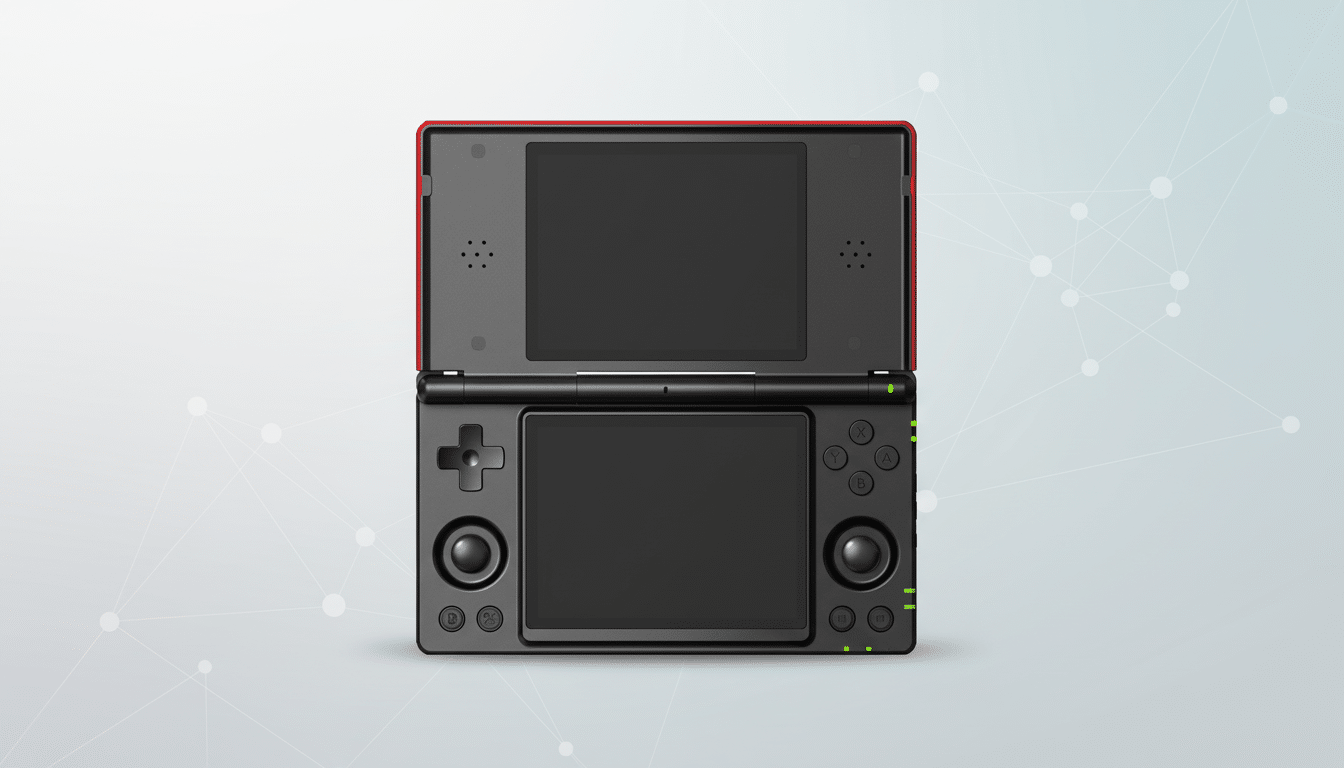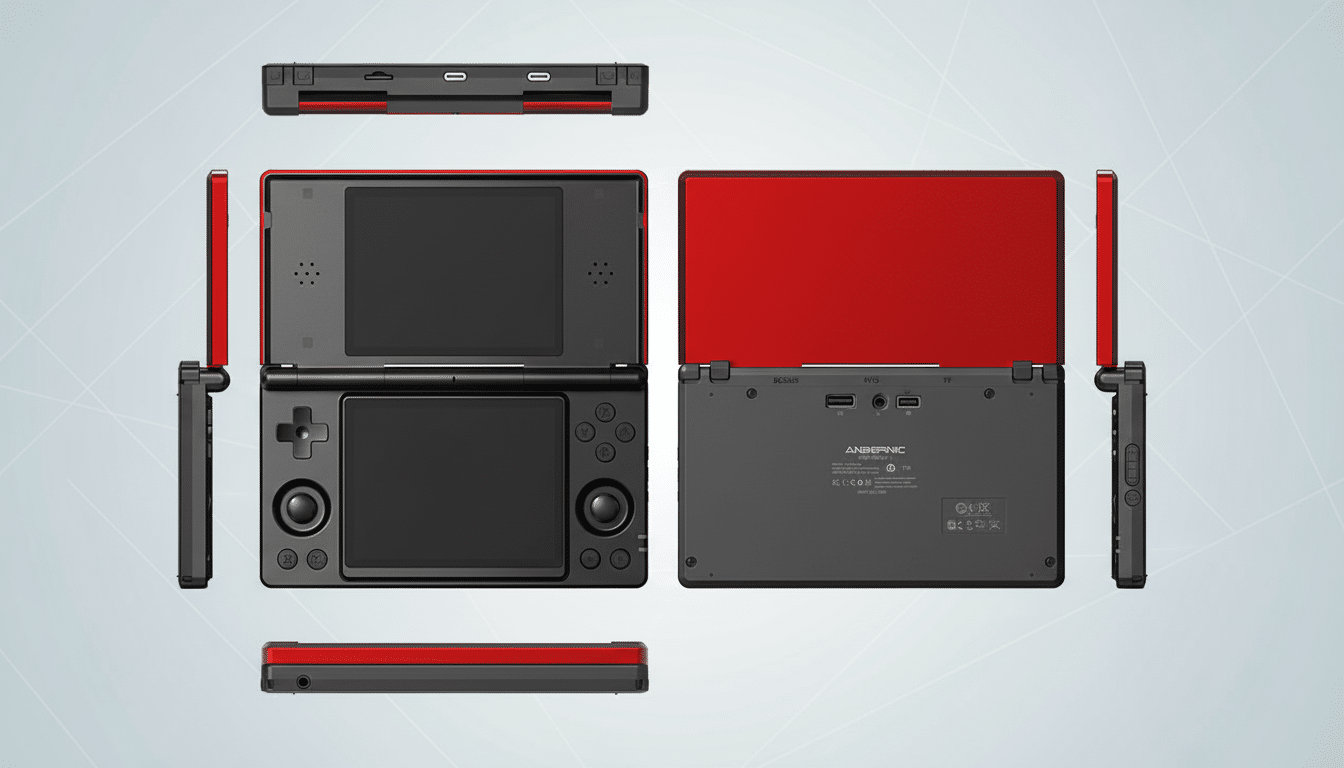The dual-screen handheld renaissance is now a reality. The Anbernic RG DS is available for pre-order for $93.99, taking the familiar clamshell form and twin displays back to a price range typically only accessible to single-screen retro players.
A significant number of fans will finally be able to play their Nintendo DS without having to deal with a mobile phone and clumsy touch controls, and that’s something to cheer about. The two 4-inch IPS panels are designed to mimic the DS line’s traditional design and dual-screen UI, which naturally lends itself to stylus play.

Right now, early birds can get the RG DS for $6 less due to currency or tax differences, although shipping and duties will usually push most people over $100 for the system. In the competitive landscape, however, that figure remains a substantial reduction.
Dual screens built for DS classics
The 640×480 displays are much better than the original DS, which makes text and UI elements sharper. Unfortunately, they don’t scale up evenly to the original dimensions, meaning pixel art titles like The World Ends With You or the obviously low-resolution Pokémon HeartGold may experience shimmer or softening. They should provide improved color and off-angle visibility compared with the washed-out TN panels used in mobile devices of that period.
The clamshell layout aids in ergonomics and screen protection, and a pair of analog sticks flank the lower screen. Non-DS system navigation will benefit from those sticks, but they are seldom used for native DS play. A capacitive stylus is included; unlike the resistive touch layer on the initial DS family, capacitive input can introduce latency and is softer to the touch. It does not dock into the chassis; plan to use a case or cover to keep it accessible.
Performance expectations and emulation support
Under the hood is Rockchip’s RK3568, a modest SoC that favors graphics muscle over raw power. Community testing of this chip in other handhelds shows it is excellent with 2D consoles and smoothly runs DS emulation via DraStic, Android’s DS emulator with a long and excellent track record. Some 3DS games will run with limited settings, but do not expect a Citra-based alternative, as those tend to be resource-hungry.
DraStic’s lack of ecosystem compatibility is the downside of its efficiency. RetroAchievements and a large library of available shaders are not present in the current version, as they are in RetroArch. DraStic is a good selection if you want the best available DS speed and responsiveness on modest hardware. Still, if you prefer a unified front end and trophy tracking, this isn’t what that hardware is intended for.
The memory and storage approach is clear-cut: 3GB of RAM and 32GB of onboard capacity. Higher tiers are not provided, indicating that a microSD card is required for extensive collections. DS ROMs are tiny by modern standards, so you’ll only push capacity by adding PSP, PS1, or tone-enhanced soundtracks.

Design choices that matter for comfort and durability
The RG DS fits roughly in the footprint of a DSi LL-style clamshell, balancing portability and screen real estate. The hinge tension and face button feel might be critical over long-term use, mainly due to rhythm games and other titles that are tap-heavy with a stylus.
Although the device claims to be a DS-first machine, it has dual analogs and an Android base that are enough to keep older system games playable. The color choices are Black & Crimson Red, Turquoise Blue, and Polar White, appealing to the nostalgic palette without screaming “retro toy.” It’s a significant factor since the target consumers—mainly commuters and casual gamers—just want to toss this in a bag or jacket pocket and forget about it.
Pricing, availability, and what to expect at launch
Preorders at $93.99 are live; they increase to $99.99 after the initial window. Budget another $10–$30 for shipping and perhaps customs, depending on your location. Straight out of the box, there is a stylus pen; you’ll need to supply a microSD card.
The units are about to ship soon, which is good for peak gifting. To put that into context, Nintendo’s lifetime sales data sets the DS family at over 150 million units, making it one of the top-selling consoles ever. The vast library that ranges from brain-training phenomena to JRPG legends and a whole generation of original touch-driven games are outstanding reasons to put a dual-screen handheld on the shopping list at this price.
Competitors and the value equation for dual-screen handhelds
Clamshell rivals like the AYN Thor and AYANEO Pocket DS take DS emulation much further, but their starting prices of about $259 and $519 respectively place them in a different category. Compact handhelds on the cheap end, such as the MagicX Zero 40, can also run DS games, but the single-screen form factor and lack of a hinge render many titles cumbersome to play.
The RG DS fits neatly into the middle ground: it is intended for DS use, is inexpensive, and is versatile enough to support older platforms. If DS nostalgia is what you’re after, this is one of the most cost-effective ways to revisit the system with proper dual screens and stylus input.
Parents hunting for a dependable on-the-go console for their children, collectors in search of a dedicated handheld for their DS collections, or players who value battery-friendly chips over raw power will likely appreciate the device. If robust Android devices, achievement ecosystems, or smoothly emulated 3DS games are your top priority, the RG DS is not for you. For the rest of us, the RG DS puts the DS era into clearer focus without costing an arm and a leg.

